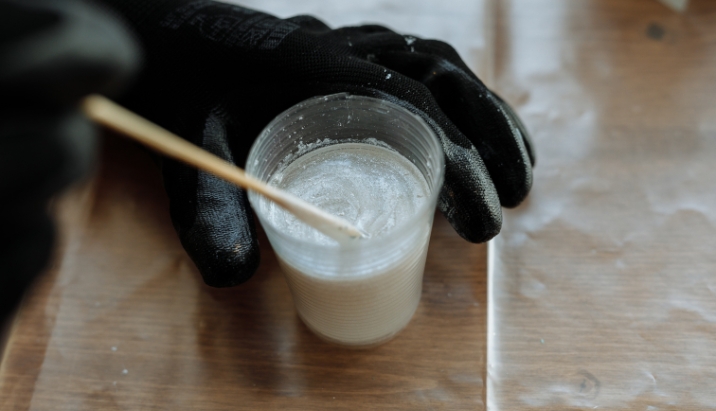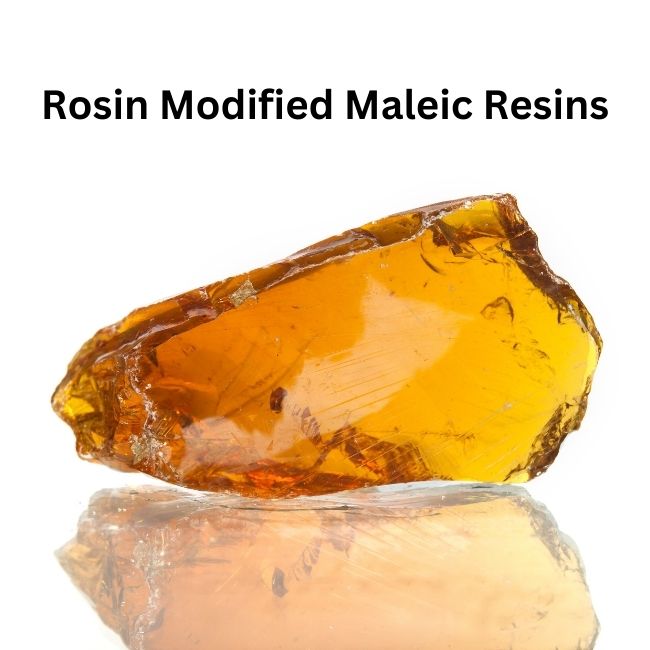
Rosin modified maleic resins have gained significant attention across a variety of industries due to their versatility and unique chemical properties. These resins are widely used in the production of coatings, inks, varnishes and other industrial products. One of the key factors that influence their performance is viscosity, which plays a pivotal role in determining how the resin behaves in different applications.
This article delves into the impact of varying viscosities of Rosin Modified Maleic Resins on its applications and why understanding viscosity is crucial.
What is Rosin Modified Maleic Resins?
Rosin modified maleic resins are synthetic resins that are made by chemically modifying rosin, a natural resin sourced from pine trees, with maleic anhydride. This modification enhances the resin’s properties, making it suitable for a wide range of industrial applications. The unique structure of these resins allows them to offer excellent adhesion, durability and resistance to heat and chemical wear.
The modification of rosin with maleic anhydride increases the resin’s reactivity, making it more effective in various applications such as paints, varnishes, printing inks and coatings. Additionally, they are known for providing superior flexibility, gloss retention and resistance to yellowing.
Viscosity and Its Role in Rosin Modified Maleic Resins
Viscosity is a key property of Rosin Modified Maleic Resins, which directly affects their processing, application and performance in final products. Essentially, viscosity refers to the “thickness” or resistance to flow of a liquid. In resins, viscosity determines how easily the material flows and spreads, which in turn impacts its application process.
The viscosity of these resins can vary significantly, depending on the molecular structure and the additives used during the resin’s production. The difference in viscosity is crucial as it influences the resin’s performance in different environments. Whether you are dealing with printing inks, automotive coatings or other industrial products, understanding the viscosity is vital for achieving the desired end product characteristics.
Rosin Modified Maleic Resins: Viscosity Variations
Different viscosities of Rosin Modified Maleic Resins offer specific advantages for different applications. These resins are available in a range of viscosities, each suited to particular needs. Let’s examine the different viscosities and their potential uses:
Low Viscosity Resins (16-20 Seconds)
Low viscosity resins are ideal for applications where smooth flow, easy spreading and rapid drying are crucial. These types of resins are typically used in:
- Printing Inks: The low viscosity allows the resin to flow smoothly onto paper or other substrates, creating fine and consistent print images.
- Shoe Polish: The resin’s ability to form a thin, even coating on leather or synthetic surfaces makes it ideal for shoe polish formulations.
- Overprint Varnish: When applied as an overprint varnish, low viscosity resins provide a thin, glossy finish that enhances the appearance of printed materials.
Medium Viscosity Resins (30-36 Seconds)
Resins with medium viscosity offer a balance between ease of application and durability. They are commonly used in applications where a thicker, more durable finish is needed. Some of the common uses of medium viscosity of Rosin Modified Maleic Resins include:
- Stoving Varnishes: These resins are ideal for creating protective coatings that require curing at elevated temperatures. Their viscosity allows for good leveling and durability after baking.
- Automotive Coatings: In automotive coatings, medium viscosity resins provide a tough finish that can withstand harsh environmental conditions.
- High Gloss Enamels: These resins are used in producing enamel paints that retain their gloss and finish over time.
- Metal Coatings: The resin’s viscosity is ideal for coatings that need to adhere to metal surfaces, providing resistance to wear and corrosion.

High Viscosity Resins (35-45 Seconds)
High viscosity resins are thick and have slower flow properties. These are typically used in applications where a thicker, more robust coating is needed. Some of the key uses of high viscosity Rosin Modified Maleic Resins include:
- Non-Yellowing Whites: High viscosity resins are used to produce non-yellowing white coatings, which are essential in products where color integrity is vital.
- Silver Staving Varnishes: The thick nature of these resins makes them ideal for creating varnishes that provide long-lasting protection and resistance to silver tarnishing.
- NC Lacquers: High viscosity resins offer the desired finish and durability for nitrocellulose lacquers used in automotive and furniture finishes.
- Roller Coating Enamels: These resins are perfect for roller coating systems where a thick, smooth and even coat is required for large surfaces.
Rosin Modified Maleic Resins: Impact of Viscosity on Application Performance
Each viscosity of Rosin Modified Maleic Resin offers distinct advantages and challenges. The choice of resin viscosity directly influences the application process and the quality of the final product.
1. Flow and Spreadability
Lower viscosity resins flow more easily, making them suitable for applications where spreading and leveling are important. However, they may not provide the thickness or durability required for certain finishes. Higher viscosity resins, on the other hand, form thicker coatings that are ideal for applications requiring more robust protection but may be harder to apply and spread.
2. Curing and Drying Time
The viscosity also affects the curing and drying time of the resin. Low viscosity resins tend to dry faster, making them ideal for fast-paced production lines. However, they may not offer the long-lasting durability that thicker resins can provide. High viscosity resins require more time to cure but offer superior finish quality and long-term performance.
3. Durability and Resistance
Higher viscosity resins tend to create more durable coatings that resist wear and tear over time. This is especially important in industries where the final product must withstand harsh environmental conditions. In contrast, lower viscosity resins may not offer the same level of protection but excel in applications that require speed and smoothness.

Choosing the Right Viscosity for Your Application
When selecting Rosin Modified Maleic Resins for a particular application, several factors must be considered:
- Application Method: The viscosity should match the application method. For example, for spraying or roller coating, high viscosity resins might be preferred for their durability.
- Environmental Conditions: The resin must withstand the intended environment. For outdoor coatings or automotive applications, higher viscosity resins provide the protection needed.
- Desired Finish: The finish type can also influence viscosity selection. Low viscosity resins are better for high gloss finishes, while high viscosity resins may be more suitable for matte or satin finishes.
Conclusion
The viscosity of Rosin Modified Maleic Resins plays a critical role in determining the resin’s behavior during application, its final properties and its suitability for various industrial uses. By understanding the different viscosity levels, manufacturers can select the most suitable resin for its needs, ensuring both product quality and process efficiency. Whether used in printing inks, automotive coatings or industrial varnishes, choosing the right viscosity can make a significant difference in the quality and durability of the finished product.
- Ketonic Resins vs. Traditional Resins in Industrial Coatings: Comparative Analysis
- Applications of Acrylic Emulsions across Residential, Industrial and Commercial Projects
- Role of Rosin Modified Phenolic Resins in Brazil and Mexico’s Industries
- Phenolic Resin in South Africa and Egypt: A Comparative Market and Supply Chain Analysis
- Titanium Acetylacetonate in Asian Catalysis: Driving Innovations in Petrochemicals and Green Chemistry



